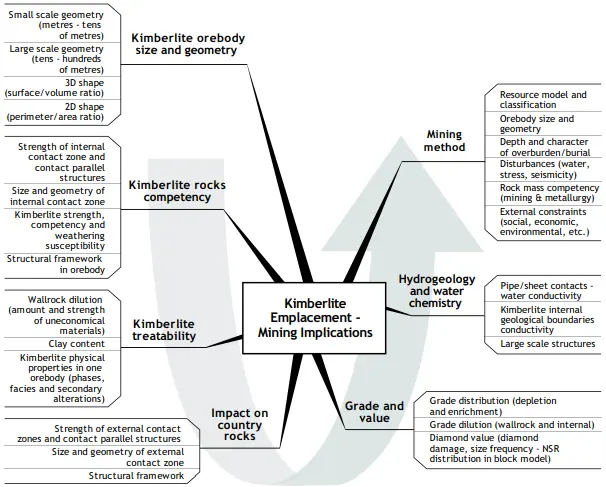Various kimberlite emplacement processes have a major impact on the nature of the kimberlite orebody and host rocks and must be considered in mine design and mining approach. Failure to understand these processes can adversely affect the economic outcome of a mine. It is therefore important to investigate those processes in order to better characterise the mining constraints and more accurately predict the mine’s economic viability.
SRK is keeping abreast of research into the advances in kimberlite emplacement and, in particular, Jarek Jakubec was invited to participate in a workshop on kimberlite emplacement held in Saskatoon.
The significance of the emplacement model of the kimberlite pipes or sheets is commonly recognised in resource geology. However, its importance is not always appreciated in the mine design process. The geometry of the orebody, the character of the contact zones, internal structures and distribution of inclusions can directly influence pit wall stability, dilution, treatability and dewatering strategy and should be taken into account when evaluating various mining methods. The problems are exacerbated in smaller pipes and narrower sheets, and in orebodies with more irregular shapes. They are more apparent in underground mining than open pit mining.
SRK is implementing the results of international research in field data collection programs to ensure that critical data are identified and addressed. The individual aspects of mine design are illustrated in the mind map above.



